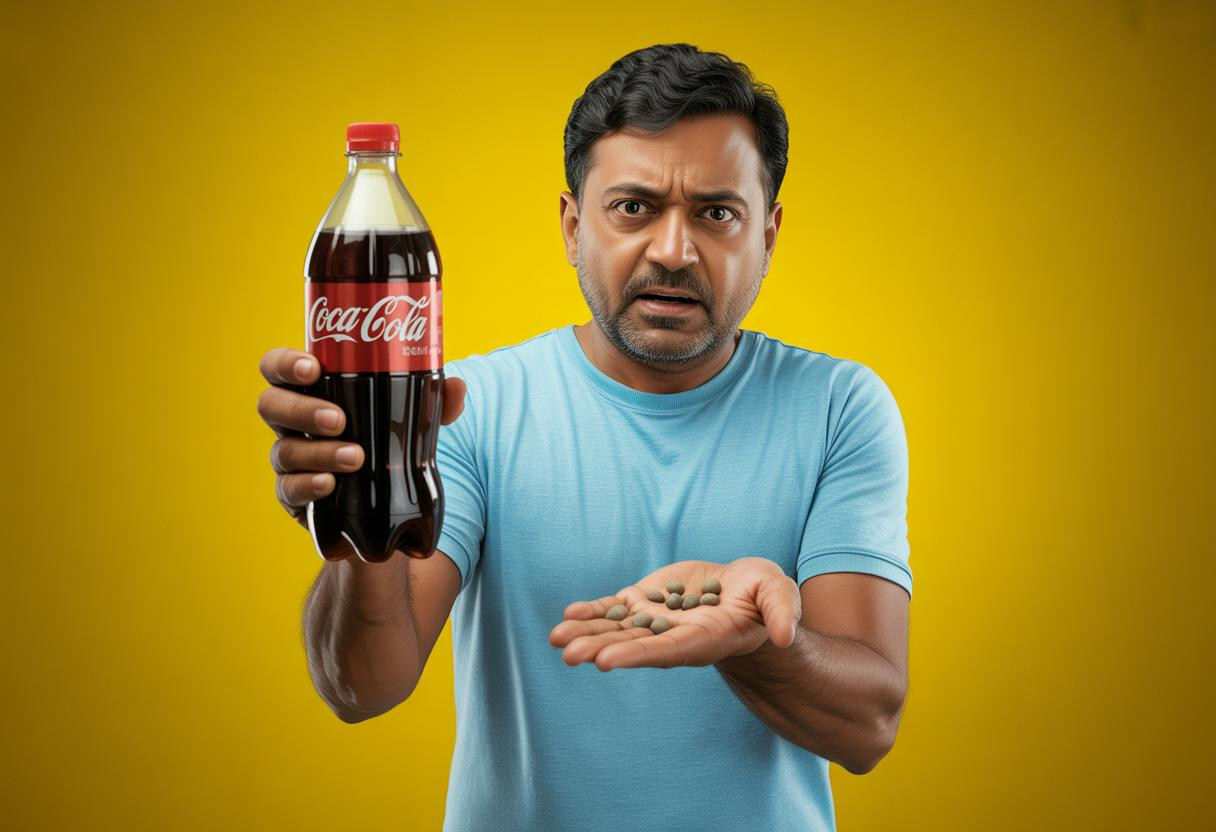A 40-year-old man from India developed 35 kidney stones after consuming 3 liters of Coca-Cola daily for several years, requiring surgical removal in a case that has shocked medical professionals worldwide. This extreme example reveals the hidden dangers of excessive soda consumption and the precise biochemical mechanisms that transform your favorite carbonated drink into a kidney stone factory.
The patient’s extraordinary case emerged in June 2025, highlighting what doctors call a “perfect storm” of mineral disruption caused by phosphoric acid and massive sugar intake. While previous studies suggested moderate cola consumption posed minimal risks, this case demonstrates how extreme daily consumption creates irreversible damage through specific metabolic pathways.
The biochemical transformation happening in your kidneys
Coca-Cola’s dual threat comes from fructose and phosphoric acid working together to hijack your body’s natural filtration system. When you consume 3 liters daily, your liver converts massive amounts of fructose into oxalate and uric acid, increasing urinary oxalate excretion by up to 40% compared to normal levels.
The phosphoric acid simultaneously acidifies your urine below pH 6, creating an environment where calcium and oxalate crystals form rapidly. This acidic state reduces citrate excretion by approximately 122 mg per day – citrate normally keeps minerals dissolved and prevents crystallization.
Why your body can’t fight back
Coca-Cola also depletes magnesium excretion, removing another natural stone inhibitor. Without adequate citrate and magnesium, your kidneys become supersaturated crystallization chambers where calcium oxalate stones form through a three-step process: supersaturation, nucleation, and aggregation.
Studies show that even one can daily increases kidney stone risk by 23%, but 3 liters represents an exponential escalation beyond any measured research parameters. This patient consumed roughly 10 times the amount used in most clinical studies.
The hidden epidemic spreading across developing nations
This case reflects broader patterns emerging in rapidly urbanizing countries where soda accessibility outpaces health education. In Indian metropolitan areas, sugary beverages often cost less than bottled water, creating economic incentives for unhealthy consumption.
Dr. Thales Franco de Andrade, who performed the surgery, emphasized that this represents “an extreme endpoint of dose-response effects we’re seeing more frequently.” The combination of affordability, availability, and lack of awareness about metabolic dysfunction and chronic disease risks creates perfect conditions for similar cases.
Beyond kidney stones: the cascade effect
Chronic excessive soda consumption correlates with chronic kidney disease progression and osteoporosis due to pH imbalance and mineral leaching. The patient’s case likely represents just the visible tip of systemic metabolic damage occurring throughout his body.
Preventing your own kidney stone factory
The most critical intervention involves recognizing that phosphoric acid poses unique risks beyond “empty calories.” Unlike other sugary drinks, colas specifically contain this kidney stone-promoting compound that disrupts multiple protective mechanisms simultaneously.
Replace high-phosphoric acid sodas with water, herbal teas, or drinks fortified with citrate and magnesium. Even small changes like simple lifestyle changes that can improve metabolic health can dramatically reduce your risk profile.
The supplement trap to avoid
While increasing citrate intake helps, avoid dangerous supplement overdoses that can cause kidney damage. Focus on natural sources like lemon water or consult healthcare providers for appropriate dosing.
Technology changing early detection
AI-driven screening now analyzes urine metabolomics to predict stone formation before symptoms appear. Wearable sensors provide real-time hydration tracking, while predictive modeling identifies individual risk factors based on dietary patterns.
These innovations offer hope for preventing cases like this Indian patient’s through early intervention rather than emergency surgery.
The wake-up call hiding in your refrigerator
This extraordinary case serves as a stark reminder that everyday food choices create long-term health consequences through precise biochemical mechanisms. The patient’s 35 kidney stones represent years of daily decisions that gradually overwhelmed his body’s natural protective systems.
Understanding these mechanisms empowers you to make informed choices about soda consumption and recognize when moderation has crossed into dangerous territory.
